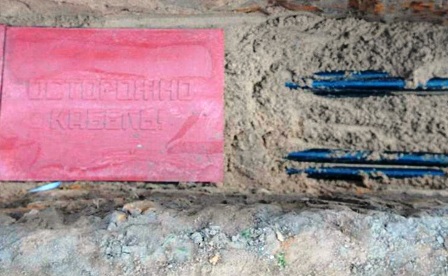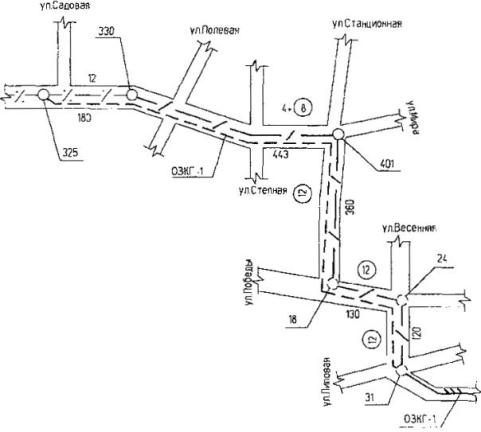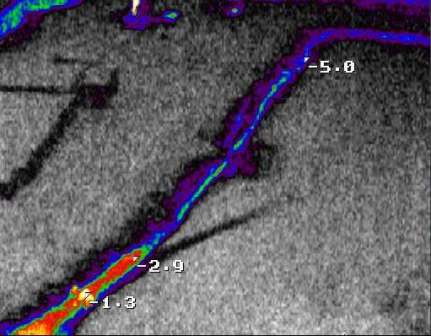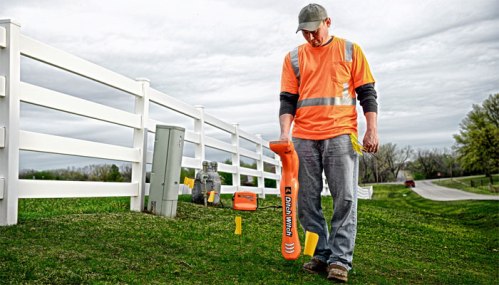Categories: Featured Articles » Sharing experience
Number of views: 35804
Comments on the article: 1
How to find the cable underground
Often, before carrying out any excavation work, or even for the purpose of servicing a cable laid underground, it is necessary to find this cable. Agree, it will be very annoying to damage the cable laid underground, for example by hooking it with an excavator bucket or accidentally drilling it.
In order to avoid such incidents, you must first obtain reliable information about the location of the cable underground, the same applies to underground communication pipelines.
If the information about the location of the cable laid underground is not reliable or insufficiently accurate, then unnecessary costs and errors are inevitable, and such errors are sometimes fraught with dire consequences for health and even for people's lives.

The condition of the underground cables can be estimated by the route locators, but sometimes it is necessary to localize the cable underground in order to further conduct a careful inspection and decide on the appropriateness of certain further actions. It is about the methods of localizing cables underground that will be discussed in this article.
As you already understood, the search for an underground cable is a responsible matter, and requires great care and accuracy. Let's look at ways to find the cable underground.
Find the documentation
In principle, any object in whose territory there are underground cables has the appropriate documentation. Drawings and schemes you can request from the city administration or from the communal service in whose office this object is located.

These drawings should provide all the information about underground utilities in the facility: underground cables, pipes, channels, etc. This documentation will become for you a source of source data from which you can start to know where to look. The data may be inaccurate, and then the next steps of the operator will clarify the location of the cable underground.
GPR radar
To probe the soil for the presence of a buried cable, as one of the options, a georadar will help.

Georadars are radars with which you can explore the walls of buildings, water, earth, but not air. These geophysical instruments are electronic devices, the operation of which can be described as follows.
The transmitting antenna emits radio frequency pulses into the test medium, then the reflected signal is fed to the receiving antenna and processed. The processes are synchronized so that the system allows, for example, to see on the laptop screen the place where the underground cable passes.
Using a georadar based on the principle of emission and reception of electromagnetic waves, it is possible to accurately determine the depth and size of an underground object. With GPR, it is easy to find plastic pipes and fiber optic cables underground. But only a professional can distinguish a plastic pipe with water from a seal in the ground. Nevertheless, it is possible to approximately determine the location of underground utilities in various types of soils. The documentation will help the operator navigate and understand what he discovered - a pipe with water or a pipe with a cable.
Negative factors when working with georadar will be: a high level of groundwater, clay soil, sediments, due to their high conductivity, and, as a result, the capabilities of the device will be lower. Heterogeneous sedimentary rocks and rocky soil contribute to the dispersion of the signal.
For the correct interpretation of the information received, it is important to have sufficient experience in this field, and best of all, if the operator is a qualified professional. The device itself is quite expensive, and the quality of its use, as you might have guessed, greatly depends on the conditions of the medium under study.
Infrared thermography method

In some cases, the temperature of the power cable laid underground can be very different from the temperature of the soil surrounding the cable. And sometimes the temperature difference may be enough to accurately locate the cable. But then again, external conditions strongly affect, and for example, wind or sunlight will significantly affect the result of the analysis.
Electromagnetic locator
The surest way to find the cable underground is to use the electromagnetic location method. This is the most popular and truly universal way to search for any conductive communications underground, including cables. By the amount of information received, this method is perhaps the best.

The boundary of the cable zone is detected. The conductive material of the underground object is identified. The cable depth is measured by evaluating the electromagnetic field from the center of the underground cable. It can work with any type of soil with the same efficiency. The locator is lightweight and does not require special skills from the operator when handling it.
The electromagnetic tracing detector of cable lines uses the well-known principle of electromagnetic induction in the process of its work: any metal conductor with current forms an electromagnetic field around itself. In the case of a power cable, this is the current of the operating voltage of the line; for a steel pipeline, it is the eddy current of the induction. It is these currents that are captured by the device.
See also at i.electricianexp.com
:
